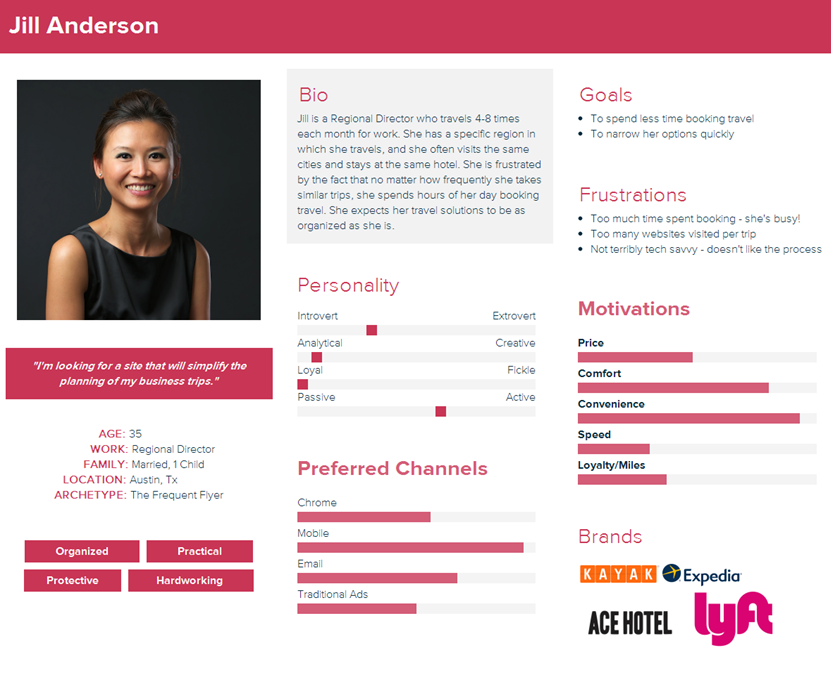Turn Your Idea into a Product Users Want: Identify the Right Problem

Most founders want to start building right away. Nearly a decade ago, entrepreneur Eric Reiss introduced the lean startup concept. The process can save you money and time by translating your idea into a prototype before developing a full product. Despite its widespread adoption and impact, lean methodology hasn’t dramatically reduced the startup failure rate. According to CB Insights, nearly 70 percent of all startups fail. And research in 2019 shows that “no market need” remains the No. 1 cause of failure. How can you build a product that customers want and will pay for? Take time to define the right problem. We sat down with Julia Austin, Dinesh Moorjani, and Allison Mnookin to talk about their early-stage product insights and approach to customer-problem fit. They share their experiences with early product development and four steps that can help you get started.
4 Steps in Identifying the Right Problem
- Define the Unmet Need or Problem
- Identify Your Target Customer Segment
- Determine the Size of the Problem and Customer Segment
- Develop Problem Hypotheses to Validate
Julia Austin, an expert in product development, early-stage advisor, and angel investor advises, “be sure you’re clear about what the problem is and who you’re solving for.” How can you become certain of the problem and potential user? Devote more time and attention to customer-problem fit.
Investigate: Does an Unmet Need Exist?
All startups need to prove that the problem they identified is worth solving by proving that 1) an unmet need exists 2) the market is big enough to go after. Most founders downplay this step in product development, according to Austin who has advised dozens of early-stage startups including Drift, Lovepop, and Wistia and taught hundreds of emerging entrepreneurs at HBS.
Teams that spend more time upfront investigating problems, discovering what’s happening in the space they’re going after, and truly getting to know their target audience tend to build better solutions.
Julia Austin
 Define the Unmet Need or Problem
Define the Unmet Need or Problem
Most founders frame problems around the solution they already want to build. Taking time to clearly define the problem—before thinking about solutions—may seem rudimentary. But problem definition can help dislodge any unconscious bias you have towards your solution. It can broaden your understanding of the product and increase your chances of building a product people want.
Identify that a Strong, Unmet Need Exists
Shikhar Ghosh accrued decades of experience building companies from the ground up and advising hundreds of founders. “Identifying a core human need underlying the problem,” he observes, “can be very powerful and improve the product.” Talking with Ghosh about customer-problem fit, serial entrepreneur and investor Dinesh Moorjani agrees. As founder and former CEO of Hatch Labs, Moorjani incubated and built over ten early-stage companies from the ground up, including the iconic Tinder.
I think it starts with something very core. . . There has to be some nagging problem.
Dinesh Moorjani
Does the Problem Encompass Any Core Emotional Needs?
Often, that problem has an emotional component. Hatch Labs released Blush, a wine-discovery app in 2011. By matching wines with user taste preferences, it allowed users to choose wine before entering a store. When defining the problem, Moorjani recalls that the team identified an emotional component. Shoppers felt overwhelmed by endless choices at a wine store.
One of many product ideas that grew from Hatch Labs, Blush was relatively short-lived. In contrast, Tinder, which launched at roughly the same time, has achieved a multi-billion dollar valuation and revolutionized how single people connect worldwide.
In the early stages of exploring customer-problem fit for an app like Tinder, Moorjani’s team identified strong emotional components. Most people have a desire for companionship and fear of rejection. Defining the problem and being aware of the emotional needs surrounding the problem sets the stage for the next step: identifying your customers and understanding their pain points.
 Identify Your Target Customer Segment
Identify Your Target Customer Segment
After developing a clear idea of the problem, you need to identify your first target audience. Many founders start by building product solutions around their own needs and experience. Austin cautions, “as you do your discovery process, be alert and willing to recognize that the ideal user is different from the image you imagined.”
Start with Demographics
You should begin by capturing demographic data about your customers: age, gender, geographic location, and income. But demographics have limitations. For instance, the demographic “professional women, ages 18-35, living in the Northeast” may be too broad in the context of your problem. Customer personas go a step further by capturing key characteristics of your target customers that provide insights into “who they are as human beings.”
Create Personas to Get Specific
As you begin to define your target customer and embark on discovery research, you can create personas, which identify salient common characteristics customers. Personas give you insights that will help you determine the right person to target first and help your team to understand a particular user’s needs and pain points. They also allow you to understand any constraints a customer may face.
Key Persona Elements
- Image. A photo or avatar humanizes your persona and enables your team to imagine a real person to help
- Short Bio. Summarizes components into a short narrative
- Personality. Describes defining traits—introvert or extrovert, etc.
- Demographics. Include basics like age, occupation, and location.
- Goals. What does this persona want as an ideal outcome of the problem?
- Frustrations. What kind of fears and frustrations do they have about today’s solutions? What are their pain points? How do they deal with the problem today?
- Motivations. What factors influence the persona’s decision—price, rewards, loyalty, social impact, etc.?
- Brands. List any brand preference related to the problem you identified?
- Preferred Channels. Where does this person shop or learn about products?
- Representative Quote. Create a quote that encapsulates what your persona wants, written from a first-person perspective.
Use a Template to Create Personas
Austin recommends using a simple template to record information about personas. Templates allow you to capture and present the information in a streamlined and consistent manner. Creating a persona quote, she emphasizes—stating what you imagine they might say about the problem from their perspective—can help your team feel connected to the persona. Hubspot offers a robust “Make My Persona” tool that enables you to enter data to build a persona. See our resources below for links to other templates.
Any additional information that you provide about a persona will likely lead to a better solution down the road because you really understand who you’re building it for.
Julia Austin
Sample Persona

Sample Persona. Source: Julia Austin, HBS Startup Bootcamp.
Understand Existing Solutions
As you develop personas, find out how they currently deal with the problem—do they use workaround hacks? Do they currently use any other solutions? Why are these solutions dissatisfying? Austin suggests asking, “What do you believe is the unmet need of that target persona” and pinpointing what makes them unhappy.
After you create a few personas, you can begin to conduct customer interviews to begin to validate that your personas are accurate. Austin cautions that often, “interviewers ask the wrong questions or gather detailed responses that lack relevance. Both can send you in the wrong direction.” For practical tips on how to conduct better interviews check out Uncovering Users’ Needs—Interviewing Techniques to Get More Meaningful Data.
 Determine the Size of the Problem and Customer Segment
Determine the Size of the Problem and Customer Segment
If you want to develop a profitable business, you need to spend some time doing a market analysis. If you identify that the market is very small, it might not be worth solving the problem—even though the problem might be a real pain point for a particular group of users.
Competitive Benchmarking
Conducting competitive benchmarking can help you understand the landscape around the problem and identify other players in the market.
You should never be thwarted by other players in the market. Just because they’re there doesn’t mean they’re doing it right. Or they could’ve been around for a long time and are ready to be displaced.
Julia Austin
Plus, Austin explains, competitors’ existence can serve as a reinforcing data point that the particular problem is worth solving.
 Develop Problem Hypotheses to Validate
Develop Problem Hypotheses to Validate
Defining the problem, identifying your target customer, and assessing the market, provide the data for your problem hypothesis. This succinct statement provides a foundational roadmap and articulates the variables you need to validate as you develop your product. Your problem hypothesis outlines your thoughts about the problem. “What do you believe is the unmet need of that target persona? What are they unhappy with? Why are they unhappy with it?”
Elements of a Problem Hypothesis Statement
- I/We believe that [INSERT: short demographic description of target audience]
- When [INSERT: Core task],
- who want [INSERT: Key functional performance and/or psychological needs]
- are dissatisfied by [INSERT: Existing solutions]
- because of [INSERT: Shortcomings of existing solution(s)]
- and/or because of [INSERT: Constraints confronting customers].
At this stage of discovery and customer-problem fit, your problem statement should focus on the problem you perceive and your customers’ needs. It should not include your proposed solution.
Instead, it should reflect detailed evidence you have observed about the problem. You’ll create problem-solution hypotheses once you determine that you’ve defined the right problem.
Sample Problem Hypothesis Statement
We believe that office professionals aged 25-45 drink caffeinated beverages
[when] throughout the workday and
want to have options with more protein and healthy-fat easily accessible.
But they are dissatisfied with the selection of teas and coffees available in their office,
because they don’t include high-protein, healthy-fat choices
and because their busy schedules prevent them from leaving the building to purchase the drinks elsewhere.
“Writing a problem hypothesis is not a one-step process” Austin underscores, “It’s just the beginning of a non-linear, ongoing discovery process.” Austin shares a basic downloadable template she developed for HBS Startup Bootcamp that forces you to articulate your belief about the unmet need or problem.
Seek Unbiased Feedback on Your Problem Hypothesis
In addition to teaching at HBS and co-leading HBS Startup Bootcamp, Allison Mnookin is the former CEO of Quick Base, Inc. In her two decades of experience as a technology executive for cloud and business software companies, she learned the importance of receiving unbiased feedback on your problem hypothesis. Mnookin advocates asking a trusted colleague who is not directly involved in your venture to review your problem statement and answer the following questions.
Evaluate a Problem Hypothesis by Asking:
- Does it sound like a real problem to solve?
- Is the problem sufficiently specific to become actionable?
- How well defined is each element of the hypothesis?
- Does the hypothesis consider the right existing solutions?
- Are any significant current solutions being missed?
Iterative Process
Austin and Mnookin observe that many founders skip the step of seeking feedback because they want to move forward quickly. But to determine if you’re on the right track, you need to continue to develop and test your hypothesis.
Don’t assume there’s an, “A, B, C, we’re done” process. It can take multiple iterations before you really end up at the right solution.
Julia Austin
Drawing from his experience in that position and as an investor today, Moorjani notes, “Product insight is laying out what you believe is a hypothesis that’s going to be true—but you might be proven false.” Or you may identify something completely different and unexpected that could take you into a new direction.
It can be frustrating when you have to continue to revisit and hypothesize. And change your statements and talk to a whole new group of people. But the more work you spend upfront, when you get to that solution build, you’re going to feel like you’re working on the right thing.
Julia Austin
Interested in learning more techniques for validating your problem and diving deeper into customer unmet needs? We continue to add to our Product section. Get practical advice and a framework for how to conduct better customer interviews in Uncovering Users’ Needs—Interviewing Techniques to Get More Meaningful Data.
EXPLORE MORE
Tools
Problem Hypothesis Template.
Julia Austin and other HBS faculty developed this template for HBS Startup Bootcamp. While many downloadable problem statement templates are available online, most address problem-solution fit. At this early stage, when trying to ascertain that you’ve defined the right problem and determine if you have customer-problem fit, it’s important to focus on your problem and your customer’s goals and pain points.
“Make My Persona” is a robust tool offered by Hubspot, a leading sales, marketing, and service software company that specializes in growth. Enter your 7 types of customer research data into the tool and it builds a custom persona that you can download or share.
Download free Persona Templates from Fake Crow, a digital consultancy, design, & development agency specializing in growth hacking, development, UX, and UI for tech companies and startups.
Resources Related to Customer-Problem Fit
In “The Top 20 Reasons Startups Fail” CB Insights reveals that the No. 1 reason startups fail is no market need. After following over 1100 startups and discovering that nearly 70% of upstart tech companies fail within 20 months after first raising funds, CB Insights analyzed the various reasons for failure. According to their research, 42% of startups failed not because the product wasn’t good, but because it didn’t have enough demand in the market.
In “Find Better Problems Worth Solving with the Customer Forces Canvas,” Ash Mayura, founder and CEO of LEANSTACK and author of Running Lean, Scaling Lean provides detailed steps for finding a problem worth solving. This includes creating an interview script to help determine customers’ needs in an unbiased manner. He notes, “guessing at ‘real’ problems at the outset is really hard given our in-built bias for our solution . . . . Most of us unconsciously frame (or fake) problems around the solution we already want to build and then attempt to seek just enough evidence to convince ourselves we are on the right track.”
In The Mom Test: How to Talk to Customers & Learn If Your Business Is a Good Idea When Everyone Is Lying to You, Rob Fitzpatrick provides valuable tips on how to talk to your customers before building your solution. He includes examples of good and approaches and mistakes to avoid. While much of the text discusses problem validation, he also underscores the importance of beginning by properly defining the idea and formulating hypotheses about the customer and problem.

